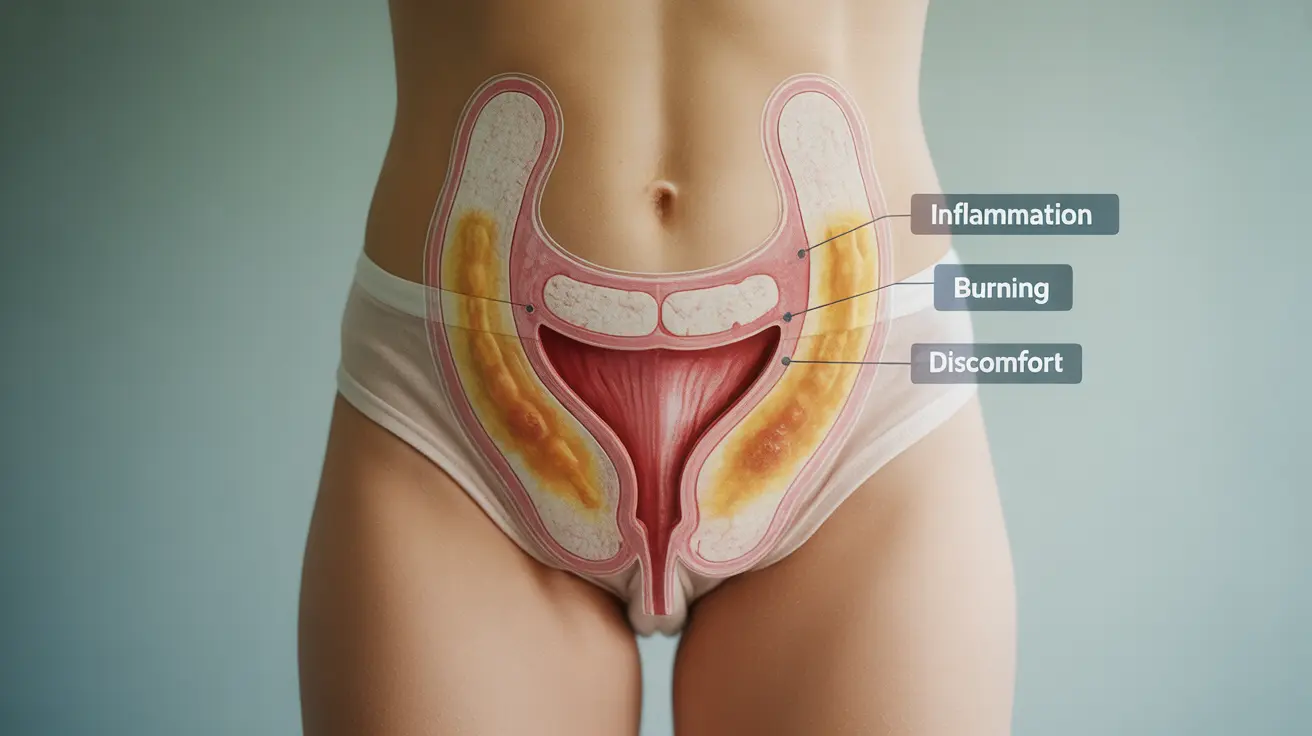If you're experiencing pelvic pain and have a yeast infection, you might wonder if the two conditions are related. While yeast infections typically cause localized discomfort, they can sometimes be associated with pelvic pain. Understanding this connection is crucial for proper diagnosis and treatment.
In this comprehensive guide, we'll explore the relationship between yeast infections and pelvic pain, help you distinguish between different causes of pelvic discomfort, and explain when to seek medical attention.
Understanding Yeast Infections and Pelvic Pain
Yeast infections, also known as vaginal candidiasis, primarily cause symptoms like itching, burning, and unusual discharge. While pelvic pain isn't typically the main symptom, some people may experience discomfort that extends into the pelvic region.
Common symptoms of a yeast infection that may contribute to pelvic discomfort include:
- Burning sensation during urination
- Swelling and inflammation of the vaginal area
- Soreness and irritation
- Deep discomfort during intercourse
Distinguishing Between Yeast Infections and PID
It's essential to understand that yeast infections and Pelvic Inflammatory Disease (PID) are two distinct conditions with different causes and treatments. Yeast infections are fungal infections, while PID is typically caused by bacteria.
Key Differences in Symptoms
Yeast infection symptoms usually include:
- Thick, white, cottage cheese-like discharge
- Intense itching
- Localized burning
- Possible mild pelvic discomfort
PID symptoms typically include:
- Severe pelvic pain
- Fever and chills
- Unusual vaginal discharge with an unpleasant odor
- Pain during intercourse
- Irregular bleeding
When to Seek Medical Attention
While mild yeast infections can often be treated with over-the-counter medications, certain symptoms warrant immediate medical attention:
- Severe or persistent pelvic pain
- Fever over 101°F
- Unusual or foul-smelling discharge
- Symptoms that don't improve with standard treatment
- Recurring infections
Treatment and Prevention
Proper treatment of yeast infections can help prevent complications and relieve associated pelvic discomfort. Treatment options typically include:
- Antifungal medications (oral or topical)
- Proper hygiene practices
- Wearing breathable cotton underwear
- Avoiding irritating products
Preventive Measures
To reduce the risk of future infections and complications, consider these preventive steps:
- Maintain good hygiene
- Avoid douching
- Change out of wet swimsuits promptly
- Wear cotton underwear
- Avoid tight-fitting clothing
- Manage blood sugar if diabetic
Frequently Asked Questions
Can a yeast infection cause pelvic pain and how common is this symptom?
While not the most common symptom, yeast infections can cause pelvic pain in some cases. This typically occurs due to inflammation and irritation of the vaginal tissues, which can lead to generalized discomfort in the pelvic region.
What is the difference between pelvic pain caused by a yeast infection and pelvic inflammatory disease (PID)?
Pelvic pain from a yeast infection tends to be milder and is usually accompanied by itching and typical yeast infection discharge. PID pain is typically more severe, accompanied by fever, and often causes a different type of discharge with an unpleasant odor.
Can a yeast infection lead to pelvic inflammatory disease (PID) or increase the risk of developing it?
A yeast infection itself doesn't directly cause PID. However, the irritation and inflammation from a yeast infection might make the vaginal tissues more susceptible to bacterial infections, which could potentially lead to PID if left untreated.
What symptoms should prompt me to see a doctor if I have pelvic pain and suspect a yeast infection?
Seek medical attention if you experience severe pelvic pain, fever, unusual discharge, bleeding between periods, or if your symptoms don't improve with over-the-counter treatment. These could indicate a more serious condition requiring professional evaluation.
How are yeast infections treated to prevent complications like pelvic pain or bacterial infections?
Yeast infections are typically treated with antifungal medications, either oral or topical. Proper treatment, combined with good hygiene practices and preventive measures, can help prevent complications and reduce the risk of recurrent infections.




